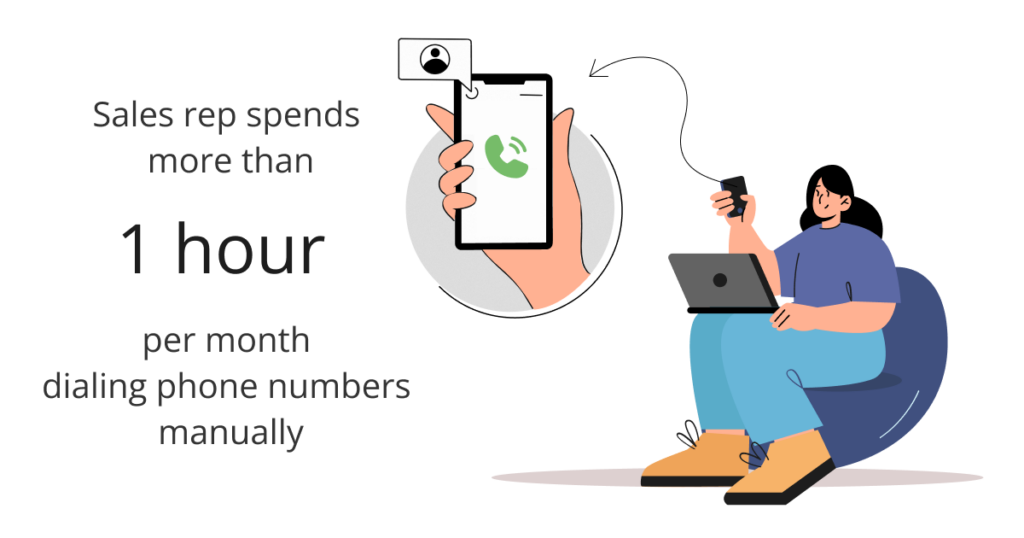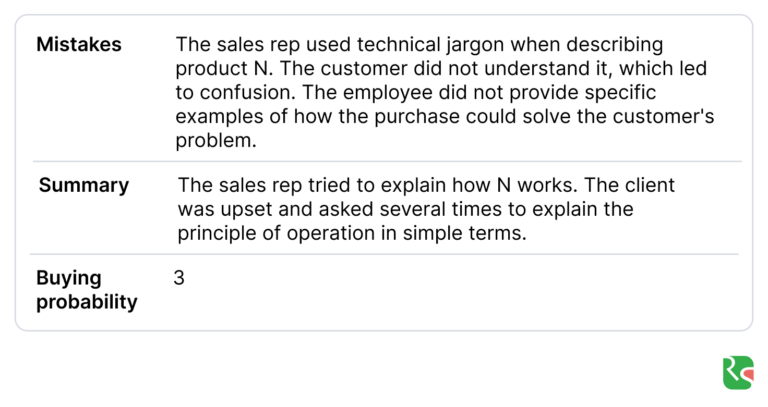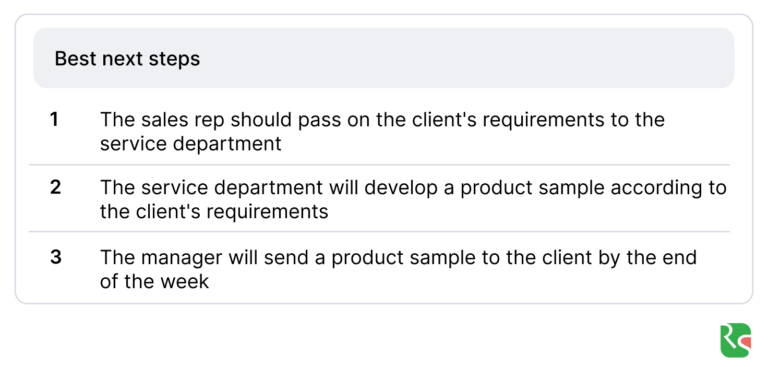72% of customers go to another company if they face a negative experience. Poor phone service plays a significant role here. That’s why more and more digital solutions for call centers appear every year. Although robots will not replace all consultants soon, technology can already reduce the influence of the human factor to zero. Ringostat has prepared an overview of the opportunities that businesses should take note of.
- Increase the speed of work
- Automate cold calls and collect customer feedback
- Personalization and accurate understanding of customer needs
- Moving all communication to a single interface
- Improving service quality with AI
- Automatic call forwarding to the right manager at once
- Tracking the most interested customers
- Conclusions: how the work of call centers and sales departments is changing due to digitalization
Sales managers often say: “People buy from people”. That is, an experienced salesperson’s charisma plays into the customer’s hands, even in a problematic deal. But “human” staff also has its drawbacks:
- the possibility of errors — for example, when the operator writes down the customer’s phone number or name;
- forgetfulness and inattention;
- slow response and speed of work when compared to digital solutions;
- the influence of mood on how an employee communicates with customers, etc.
Therefore, companies are trying to automate as many processes as possible. According to forecasts, by 2026, contact centers that replace humans with bots will be able to save $80 billion a year. But until that happens, the team can be strengthened by digital solutions right now.
Increase the speed of work
In an ideal world, a sales or call center employee spends 90% of their time communicating with customers. In reality, more than 40% of the staff spends at least a quarter of the working week on routine manual work. For example, after each call, sales reps or operators need to:
- record that the call took place;
- specify the client’s data;
- record a summary of the conversation, etc.
Extra minutes are also spent during a call. When an employee needs to recall the nuances of a deal, he or she must first find it in CRM, while the client is on hold.
The businesses use the integration of virtual telephony and CRM to automate such mechanical actions. Due to such a connection, after each call in the CRM system:
- a customer contact with a phone number and a deal is created — if it hasn’t already been made for this customer;
- an audio recording of the call appears;
- the task “Call back” is set if the manager missed the call.
More information is in the article “Ringostat + CRM: 5 powerful integrations for a productive sales team.”
Integration with CRM also has a plus for the quality of service. It is available if you use virtual telephony-based calling apps. For example, Ringostat Smart Phone. This program shows buttons to quickly go to contact or transaction in CRM when an existing customer calls. This way, the manager can quickly view the information and be fully armed when answering the call.

Automate cold calls and collect customer feedback
Modern technologies also relieve the workload of those employees who mostly make calls themselves. Such sales reps or operators spend a lot of time just dialing numbers. It takes 6-10 seconds if an employee enters the phone number manually, and 5 seconds if they copy and paste the number. If you need to make dozens of calls a day, these seconds add up to hours of working time.

How can you save this time? There are already programs that allow you to call a number located anywhere with just one click. It’s enough to open a database of potential customers with numbers, a contact card in CRM, or the website of the company you need.
Companies are often asked to evaluate the quality of service by rating it after the call. However, many customers are in a hurry to hang up immediately after the conversation. If the manager calls customers and asks for feedback “live”, this is again a waste of working time.
Digitalization solves this problem as well. Contacts of customers who have placed an order are uploaded from CRM, and the program automatically calls them. After picking up the phone, customers hear an audio recording asking them to rate the service.
Personalization and accurate understanding of customer needs
71% of customers expect personalized interaction from companies, and 76% are disappointed when they don’t receive it. Therefore, a manager should at least immediately address the customer by name when they call. This is where the integration of virtual telephony and CRM comes in handy again. The calling program immediately shows the name of the calling customer if the contact is already in the CRM system.
And this is only the initial level of personalization. The problem is that the call center operator or sales manager does not see the caller. In this regard, an offline seller is in a better situation. They can recognize a regular customer, determine by age and clothing what to offer the visitor, and what kind of check they are expecting. If a person is standing in front of a certain showcase, it is immediately clear what they are interested in.
To find out the same thing during an online sale, an employee has to ask a lot of questions. Or surprise customers with your “insight” — which is also helped by special solutions. One of them is call tracking. This technology collects data about the source of the call and the customer’s actions before he or she made the call.
If you combine this with a calling solution, the manager receives valuable information about the customer before they even pick up the phone:
- what kind of request the client came with — so you can immediately understand what to offer them;
- which pages the visitor has viewed most often — that is, which products are of primary interest to him or her;
- what city and country the client is located in;
- how many times they have already called and visited the site – this is how you can determine the degree of interest, etc.
How to use this in practice? Let’s imagine that the customer has already called twice before with the request to buy a juicer. He has also visited the Philips juicer page four times and the page of a cheaper Chinese counterpart twice. The visitor also looked at liter jugs once.
What can a sales rep do with this information?
- Immediately “guess” what the customer was interested in and build personalized communication from the very beginning.
- Focus his attention on the advantages of the Philips product and the disadvantages of a cheaper analog.
- Offer a related product, a jug. After all, the employee knows that the customer has already been interested in it.
In this way, the manager not only clearly understands the client’s needs, but can also sell a more expensive model. And in addition, they can increase the check by offering another product.
Moving all communication to a single interface
According to the Harvard Business Review, each office worker spends an average of 45 minutes a day, or 9% of their total working time, switching between applications and tabs. Therefore, services for sales departments strive to “collect” all channels of communication with customers.
For example, CRMs have long been able to pull up the history of mailing customers in a deal card.
The problem is that customers can not only send letters and requests but also write in messengers. Such messages are often processed on a residual basis, when the sales rep mentions that they need to log into the corporate account.
We use Ringostat Smart Phone app to solve this problem. It contains a single interface for calls, which also receives messages from Viber, Telegram, and Messenger users. All messages are lined up in a queue, and the manager can gradually take them to work. At the same time, he or she responds directly to the program without switching to a specific messenger. This allows not to keep several windows open at once and not miss requests.

Improving service quality with AI
The global AI market for call centers was estimated at $1.6 billion in 2022. It is predicted to reach $4.1 billion by 2027. This is not surprising, as artificial intelligence can control the sales department even more successfully than a supervisor.
Usually, such a specialist has to spend dozens of hours listening to calls to find and analyze a few problematic dialogues. This monotonous work is now taken over by artificial intelligence, which is available to Ringostat users in particular. Here are just a few of its capabilities:
- transcribing the audio recording of the conversation into the text;
- assessing whether a particular dialog requires the manager’s attention, so the manager knows which conversations to focus on;
- searching for mistakes made by the operator during the conversation;
- recommendation of the next steps – for example, to send the customer an invoice, offer a specific product;
- description of the general mood of the conversation, separately from the mood of the manager and the client;
- predicting the probability of a purchase so that the employee knows which transactions to focus on first.


Read the article “Ringostat AI: instant analysis of customer conversations is the future of sales”.
Читайте статтю “Ringostat AI: instant analysis of customer conversations is the future of sales.”
Automatic call forwarding to the right manager at once
8 out of 10 customers want to resolve all their issues in one call to a company. But 53% face the fact that communication is split into several approaches. At the same time, 70% of customers get annoyed when their call is transferred from one department to another. After all, the customer has to wait for a connection every time and re-describe the reason for the call.
The latter problem is partially solved by IVR — voice mail, where the customer can immediately select the desired department. But there are more advanced ways to connect clients with the right employees.
- Directing the call to the operator with whom the customer has already spoken today. This method is suitable for companies that do not have a CRM. The telephony “remembers” which employee the customer spoke to and connects them directly.
- Call forwarding to the employee responsible for the transaction. This is a way for organizations that use CRM.
- Directing the call to the employee responsible for a certain group of products. This method requires call tracking, which we have already mentioned above. Ringostat, in particular, determines which page of the site the customer is on during the call. And it connects them to the employee who is responsible for selling specific goods or services.
The latter method is often used in real estate, when a developer has several properties on one website. The solution tracks which apartment complex page the visitor is on at the time of the call, and directs his call to the sales department, which is responsible for this particular object.
Artificial intelligence is already being used to forward calls. Google has a product called Dialogflow CX from Google that allows you to create smart voice menus. The client voices his request, and Dialogflow can answer it on its own. If it becomes clear that the customer needs human assistance, the system transfers the call to the appropriate department. For example, if the words “invoice” and “documents” are mentioned in the dialog, the call will be forwarded to the accounting department.
Tracking the most interested customers
Many services track who visits your website and how they behave on it. For example, the Finnish web application Leadfeeder identifies which companies and people are on the site and which pages they visit collects lead contacts, and transfers them to CRM.
There is a similar solution for calls. It shows which of the customers who have already called the company are currently on the site. You can see what page the visitor is on, where they came from, how many times they have already called, etc. The phone number is also immediately displayed, so the sales rep can dial the potential buyer right when they are on the site.

Conclusions: how the work of call centers and sales departments is changing due to digitalization
- There is more time that can be spent directly on sales. This is due to the fact that many processes are automated. For example, entering call data into CRM, setting tasks, and making a one-click call from CRM and from any website.
- Communication with customers is becoming more personalized. Technologies collect data on the customer’s name, what brought them to the website, what they are interested in, etc. The sales rep can only recommend suitable products and try to make an upsell or cross-sell. After all, he already knows whether the customer was interested in additional products.
- The quality of service improves, and it takes less time for the team to control it. AI can quickly analyze hundreds of calls and find problematic ones that require managerial attention. The algorithm will also tell you what mistakes the operator makes and how to fix them. It will also advise what steps to take next to close the deal.
- No need to switch between different interfaces. Modern solutions can combine calls, correspondence, and communication in messengers. This way, employees don’t risk missing a message from a customer, no matter where it comes from.
- Customers are immediately directed to the right department or specialist. This happens thanks to automatic call forwarding schemes. The system determines which employee the customer spoke to or what product they are interested in. Depending on this, the call is routed to the responsible operator or the entire department.
- It is possible to “intercept” customers who are currently on the site. There are solutions that show which customers have visited your site. At the same time, you can see their contacts. This way, a manager can immediately contact a potential buyer while they are most interested.

